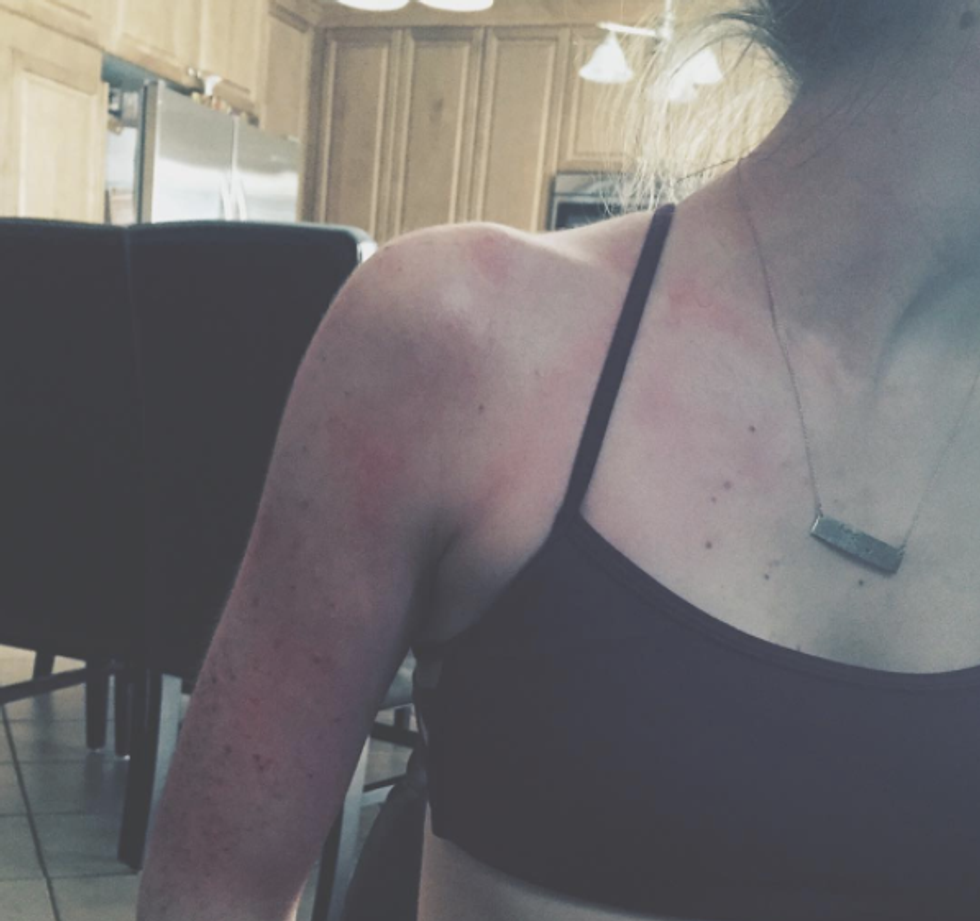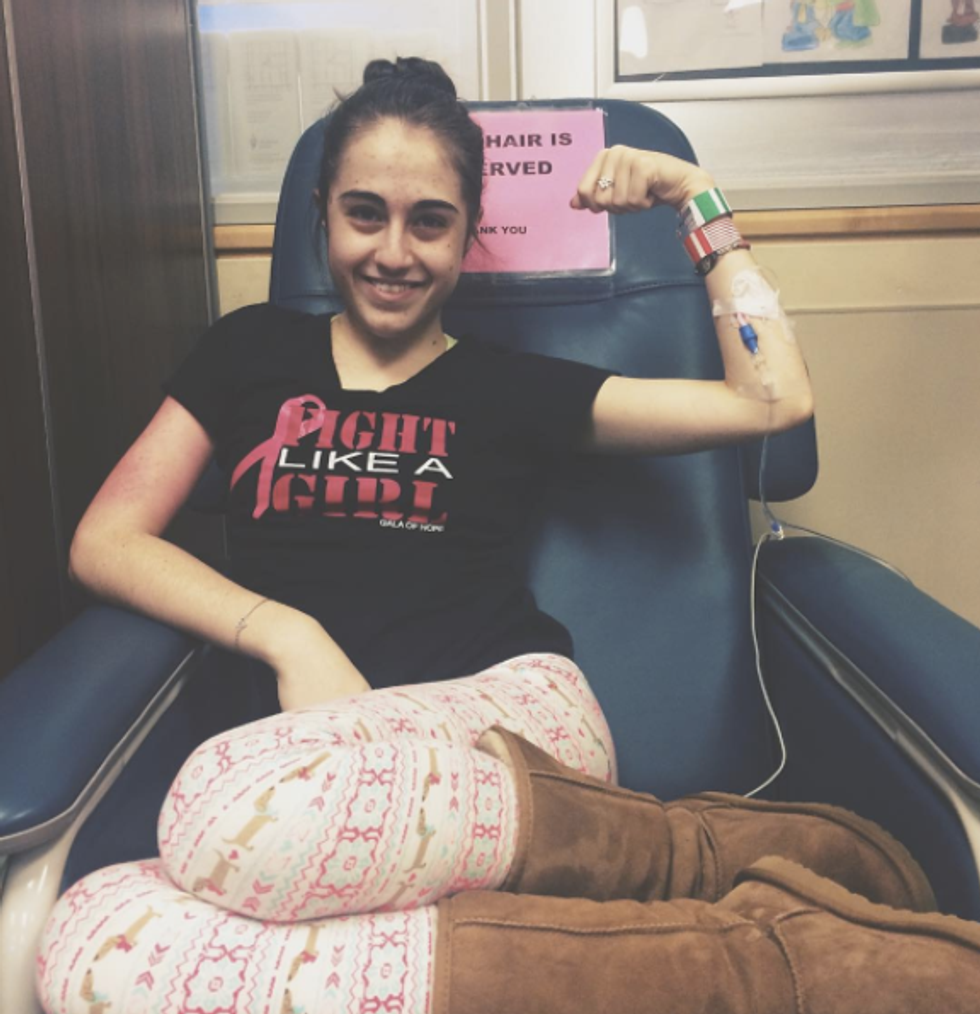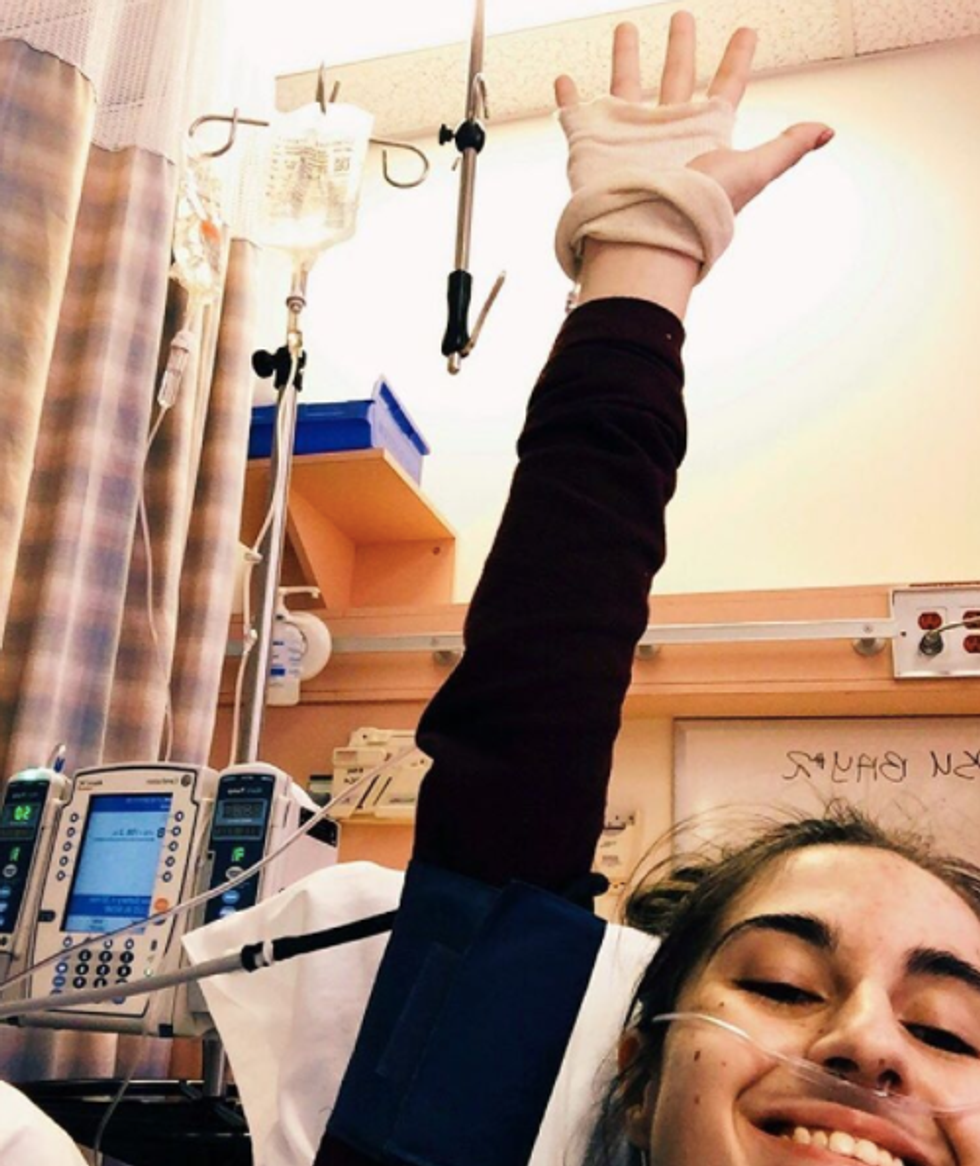It was in October of 2014 that I dislocated my shoulder after falling down the stairs while working. I was a nanny to a sweet little girl who was just learning to walk, and in an attempt to prevent her from falling down the stairs I (fortunately) took the blow for her. After a trip to the emergency room, we concluded that my shoulder would not permanently relocate without surgery, so we scheduled a stabilization surgery for early 2015. Thankfully my surgery went seamlessly and aside from some complications with the nerve block and uncontrolled pain, my shoulder was back in its socket and I was ready to begin my 6-week healing process.
Two weeks after my surgery and discharge I noticed a red patch beginning around my incisions that came with a great deal of pain. That red patch kept growing and the pain intensified to the point of me being unable to touch the area without wanting to scream. After another trip to the emergency room, I was put on a 6-week course of antibiotics for a suspected infection. When said infection didn't respond to the antibiotics and there was no reduction in pain and sensitivity we knew we weren't dealing with an infection but the question remained as to what it was.
This uncertainty warranted a visit to a neurologist to investigate my nerves, I thought the worst I could face was irreversible nerve damage; I was wrong. I walked out of the office that day with a diagnosis of Complex Regional Pain Syndrome (CRPS) or Reflex Sympathetic Dystrophy (RSD). CRPS is a progressive nerve condition that occurs after an injury, it tends to be localized to the site of injury but can spread throughout the body; it is considered to be the most painful disease known to science. CRPS occurs when the nerves at the site of the injury or trauma continue to fire signals that are processed as pain despite the healing or resolution of the issue. In my case, I am affected from my right elbow throughout my right shoulder, the right side of my face, and across the top of my back. This disease has a mind of its own. I have little to no control over the pain and it is a pain that I've only felt in nightmares. My arm turns shades of red and purple specifically around the areas where I'm sensitive, it can sweat while the rest of my body is shivering or get goosebumps when the rest of my body is sweating. A common symptom with CRPS/RSD is known as allodynia; which is when a painful response is interpreted as a result of non-painful stimulus. Because of the allodynia, simple things like wearing clothing, taking a shower, getting goosebumps, even wind blowing against my arm have become nothing short of torturous.
The pain CRPS caused me couldn't be dulled by even the strongest narcotic, even medications specifically designated for nerve pain couldn't touch the levels of pain I felt constantly. I was put on doses of narcotic medication that would have sedated someone three times my size but still left me crying in pain. The pain would become so severe that the muscles in my arm and hand would contract and tremor, and at times my entire right side would contract. To be honest with you, there are many nights that I lay in bed and cry until I fall asleep because I have no other option to soothe the pain. I worked with a pain clinic in one of the most coveted hospitals in Toronto to gain relief. But relief was a struggle that I wasn't sure we were able to attain until my doctor suggested I enter a study being held: a ketamine infusion.
Ketamine is a strong dissociative drug that was a popular party drug in the 1970s through the 1990s because of its mind-altering effects that can result in vivid dreams, hallucinations, and out of body experiences. Aside from its use in the club scene, it's main use is in sedation of animals and humans and fast acting pain relief. But the uses and potential it has in biomedicine is still being discovered. Research has revealed that ketamine's analgesic effects are specifically beneficial to patients with neuropathic pain, patients like myself with CRPS. It is given intravenously as that is the most effective route, but there are different practices and protocols depending on the doctor that is administering it. In Toronto, I received 5 days of high dose ketamine followed by 6 weeks of oral ketamine. I truthfully went into the experience terrified, I do not like the feeling of being "loopy" and I was terrified of hallucinating. Thankfully I expressed these concerns to my doctor who made sure I would be comfortable throughout the process. I arrived at the hospital at 7 am and would be done with my infusion for the day by 3 pm. My ketamine infusions were done outpatient so I had my infusions in the Post Anesthetic Care Unit with a one-to-one nurse; I would go home for the night and return the next morning from Monday to Friday. Each morning we would begin with medications to combat the side effects and the infusion was started. I had some vivid dreams and hallucinations the first day but was easily corrected with additional medication, and from there it was smooth sailing. I began on Monday, by Wednesday I noticed a drastic change in my pain and by the end of the week I was able to physically touch my arm—something I hadn’t been able to do for almost an entire year. As time passed I gained more and more relief, I was able to wear heavier clothing and take showers again which seems small to most people but were huge victories for me to gain back.
Four months after my first ketamine infusion, my CRPS relapsed and spread further into the right side of my body. Since my first infusion in January of 2016, I have had two additional treatments. These ketamine infusions are the only thing relieving my pain short and long term, and allowing my life to continue as an independent young adult. I never expected that my relief would be held within the realm of a medication that people use as contraband outside of a medical setting. Regardless of the opinions of the rest of the world, these infusions are bringing me relief from the incessant pain I face every day and that’s a wonderful reminder that beauty is in the eye of the beholder. You may not understand my pain, my disease, or my medicine, but at the end of the day I am the one living in this body and if I can start and end my days in less pain… well, that’s more than enough for me











 The minimum wage is not a living wage.
StableDiffusion
The minimum wage is not a living wage.
StableDiffusion
 influential nations
StableDiffusion
influential nations
StableDiffusion












